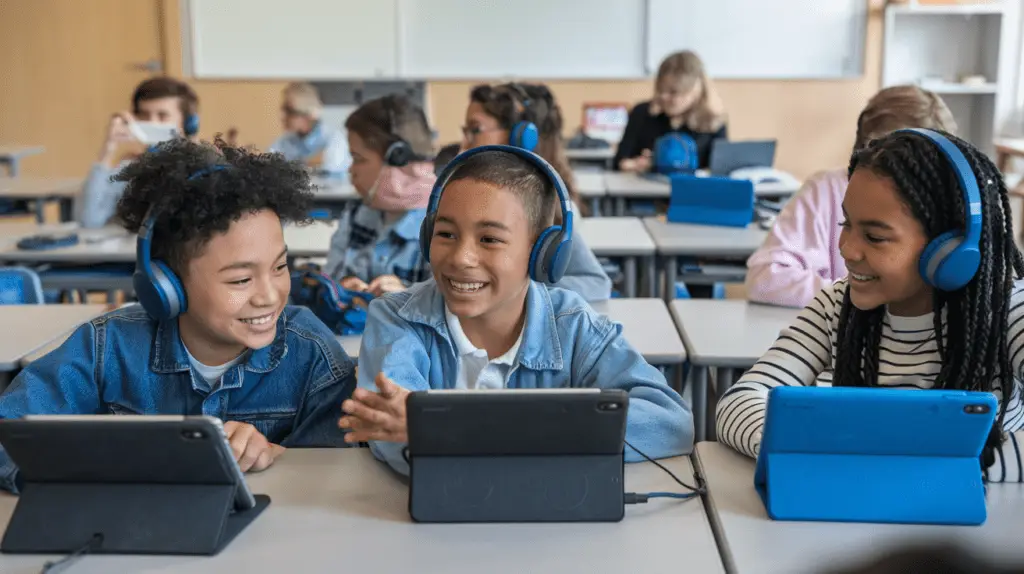In today’s interconnected world, international collaboration in the classroom has become a cornerstone of modern education. As educators, we have the unique opportunity to broaden our students’ perspectives and prepare them for a globalized future. By embracing international collaboration, we can create rich, meaningful experiences that foster cultural understanding, develop critical thinking skills, and nurture global citizenship.
This comprehensive guide explores five powerful strategies for implementing international collaboration in your classroom. Whether you’re new to global education or looking to expand your existing initiatives, you’ll find valuable insights and practical approaches to transform your students’ learning journey.
1. Fostering Cultural Understanding and Empathy Through Virtual Exchanges
International collaboration opens doors to authentic cultural exchanges, allowing students to develop a deeper understanding of diverse perspectives and ways of life. By connecting with peers from different countries, students can break down stereotypes, challenge their assumptions, and cultivate empathy for people from various backgrounds.
To implement a successful virtual pen pal program, consider the following steps:
- Partner with a school or classroom in another country through platforms like ePals or Class2Class.
- Establish clear communication guidelines and schedules for exchanges.
- Provide prompts or themes for students to discuss, such as local traditions, family life, or school experiences.
- Encourage multimedia sharing, including photos, videos, and audio recordings.
- Facilitate group discussions to reflect on cultural similarities and differences.
Another powerful approach is collaborative storytelling projects. Students from different countries can work together to create stories that incorporate elements from their respective cultures. This creative process not only enhances language skills but also encourages students to explore and celebrate cultural differences and similarities.
By engaging in these cultural exchange activities, students develop a more nuanced understanding of the world and become better equipped to navigate our increasingly diverse global society.

2. Enhancing Global Awareness and Citizenship Through Collaborative Projects
In our interconnected world, it’s crucial to equip students with the skills and knowledge to become responsible global citizens. International collaboration provides a platform for students to engage with global issues, develop a sense of shared responsibility, and take action on matters of global significance.
One effective way to enhance global awareness is through collaborative research projects focused on the United Nations Sustainable Development Goals (SDGs). Students can partner with peers from other countries to investigate local manifestations of global challenges, such as climate change, poverty, or gender inequality. By sharing their findings and brainstorming solutions together, students develop a deeper understanding of complex global issues and their role in addressing them.
3. Developing 21st Century Skills Through Cross-Cultural Collaboration
International collaboration in the classroom provides an ideal environment for students to develop essential 21st century skills, including communication, critical thinking, creativity, and digital literacy. By working with peers from different cultural and linguistic backgrounds, students learn to adapt their communication styles, navigate cultural nuances, and leverage technology to collaborate effectively across borders.
To implement a cross-cultural project-based learning initiative:
- Identify a real-world problem that resonates across different cultural contexts.
- Form international student teams with diverse skill sets and perspectives.
- Provide a project framework that includes research, design, and presentation phases.
- Encourage the use of various digital tools for collaboration, such as project management platforms, video conferencing, and design software.
- Schedule regular check-ins and milestone presentations to track progress and provide feedback.
- Culminate the project with a virtual showcase where teams present their solutions to a global audience.
Another powerful approach is organizing international hackathons or innovation challenges. These events bring together students from different countries to tackle real-world problems using technology and design thinking. By working in diverse teams, students learn to leverage their collective strengths, think outside the box, and develop innovative solutions to complex challenges.
To organize an international hackathon:
- Choose a theme or challenge that aligns with global issues and student interests.
- Partner with schools or organizations from different countries to ensure diverse participation.
- Provide pre-event workshops on design thinking, coding, or other relevant skills.
- Use online collaboration platforms to facilitate team formation and ideation.
- Incorporate mentorship from industry experts or educators across different time zones.
- Conclude with a virtual pitch session where teams present their solutions to a panel of judges.
Through these collaborative experiences, students not only develop crucial 21st-century skills but also gain a deeper appreciation for diverse perspectives and approaches to problem-solving.
Embracing International Collaboration in Your Classroom
As we’ve explored, international collaboration in the classroom offers numerous benefits for both educators and students. By incorporating these strategies into your teaching practice, you can create transformative learning experiences that prepare your students for success in our interconnected world.
Remember, the key to successful international collaboration lies in creating meaningful connections, fostering open-mindedness, and embracing diverse perspectives. As you implement these strategies, encourage your students to reflect on their experiences and how they’re growing as global citizens.
Join the Class2Class community today and connect with educators from around the globe who are passionate about fostering global citizenship and enhancing learning through cross-cultural experiences.
By embracing international collaboration, you’re not just teaching your students about the world – you’re giving them the tools to actively engage with it, shape it, and thrive in it. Together, we can create a generation of globally competent, empathetic, and innovative thinkers ready to tackle the challenges of tomorrow.


